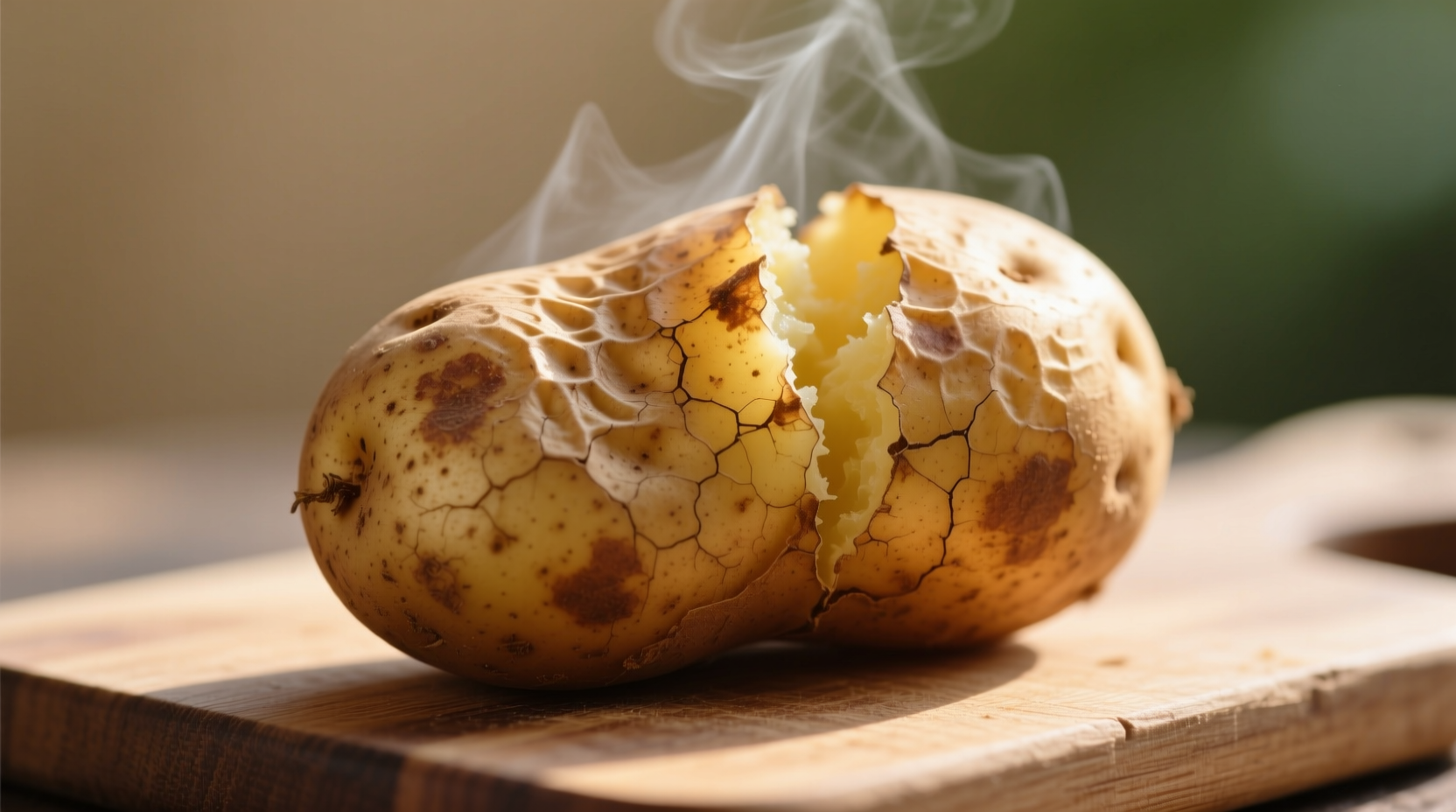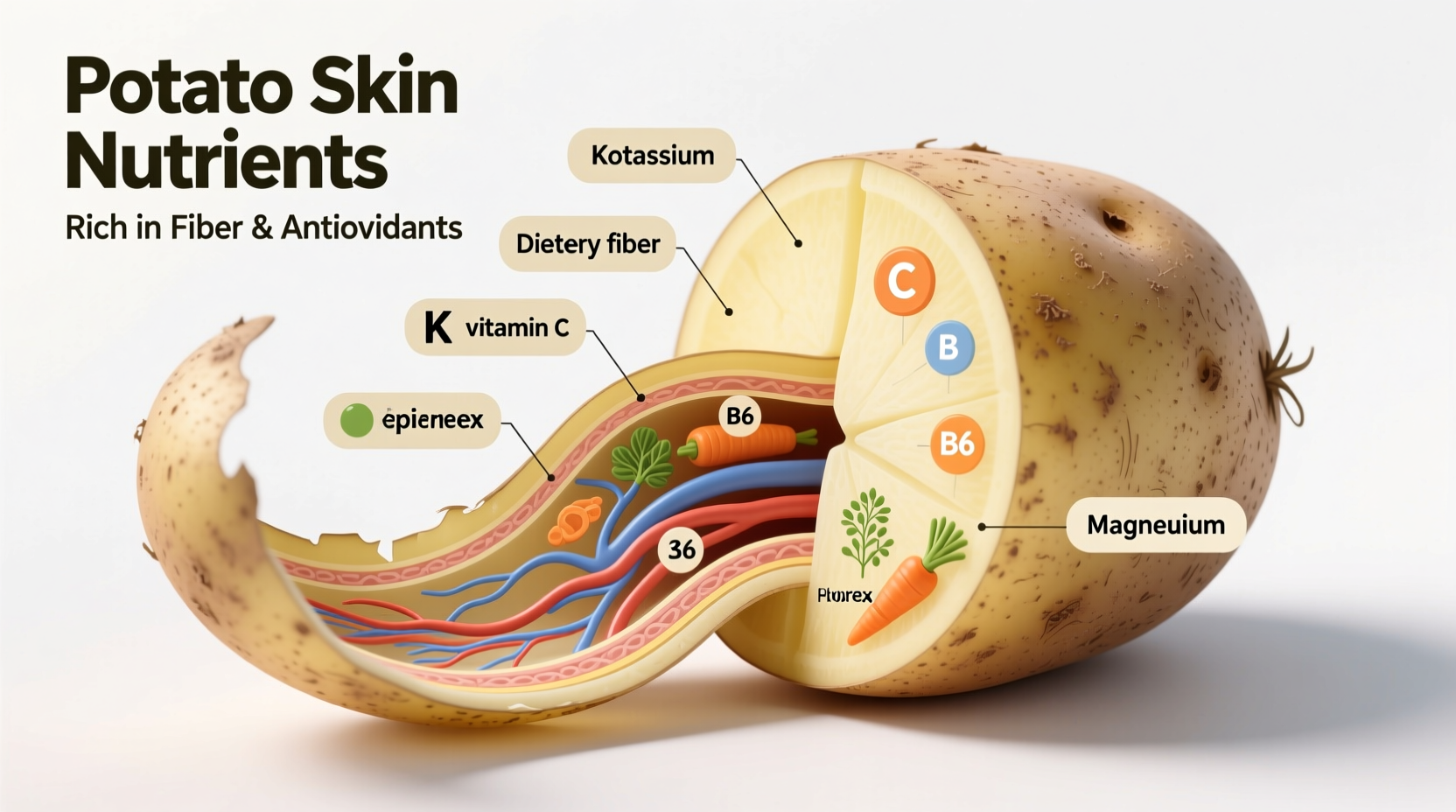Potato skins contain significantly higher fiber, potassium, and certain antioxidants than the flesh, making them a nutritionally valuable part of this versatile vegetable when properly prepared and consumed.
Why You Shouldn't Peel Your Potatoes: The Hidden Nutrition in Potato Skins
Most people automatically peel potatoes before cooking, unaware they're discarding some of the most nutrient-dense portions. Recent research from the USDA Agricultural Research Service confirms that potato skins contain up to 50% more fiber and higher concentrations of key nutrients compared to the flesh alone. This comprehensive guide reveals exactly what nutritional benefits you gain when keeping the skin on your potatoes.The Nutritional Powerhouse Beneath the Surface
When evaluating the complete nutritional profile of potatoes, the skin emerges as a concentrated source of essential nutrients. According to data from the USDA FoodData Central database, a medium-sized potato with skin provides substantially more nutritional value than its peeled counterpart.| Nutrient | With Skin (per 150g) | Without Skin (per 150g) | Difference |
|---|---|---|---|
| Dietary Fiber | 3.6g | 2.0g | +80% |
| Potassium | 926mg | 620mg | +49% |
| Vitamin C | 27mg | 17mg | +59% |
| Iron | 1.9mg | 0.7mg | +171% |
| Antioxidants | High | Moderate | +200%* |
*Based on total phenolic content measurements from Journal of Agricultural and Food Chemistry research
Key Nutrients Found Specifically in Potato Skins
Fiber for Digestive HealthThe roughage in potato skins primarily consists of insoluble fiber, which promotes regular bowel movements and supports gut microbiome diversity. This fiber content explains why whole potatoes have a lower glycemic index than peeled versions, making them a better choice for blood sugar management. Potassium Powerhouse
Potato skins deliver more potassium than bananas by weight. This essential mineral helps regulate blood pressure, supports proper muscle function, and balances electrolytes. The concentration is highest just beneath the skin surface, which is why peeling removes significant amounts. Antioxidant-Rich Compounds
Research published in the Journal of Agricultural and Food Chemistry identifies that colored potato varieties (particularly purple and red) contain anthocyanins and other flavonoids concentrated in the skin. These compounds combat oxidative stress and may reduce inflammation.

Safety Considerations: When Potato Skins Need Caution
While potato skins offer nutritional benefits, certain conditions require attention:- Green spots indicate solanine buildup from light exposure - these areas should be removed
- Sprouted potatoes develop higher solanine levels, especially near sprouts
- Proper washing is essential to remove soil contaminants - scrub with vegetable brush
Maximizing Nutrient Retention: Cooking Methods That Preserve Benefits
How you prepare potatoes significantly impacts the nutritional value you retain:- Steaming or boiling with skin intact preserves water-soluble vitamins better than peeling first
- Baking whole potatoes maintains the highest nutrient levels compared to other methods
- Avoid deep frying skins which adds unhealthy fats that counteract nutritional benefits
- Cooling cooked potatoes increases resistant starch content, enhancing fiber benefits
Common Misconceptions About Potato Skins
Several myths persist about potato skins that deserve clarification:- "Potato skins are high in pesticides" - While conventionally grown potatoes may have residue, proper washing removes most contaminants. The Environmental Working Group's 2024 Shopper's Guide shows potatoes have decreased significantly in pesticide residues over the past decade.
- "All nutrients are in the flesh" - Scientific analysis proves multiple nutrients concentrate near and in the skin.
- "Sweet potato skins are more nutritious than regular potato skins" - Both offer unique benefits; regular potato skins provide more potassium while sweet potato skins offer more vitamin A.
Practical Ways to Enjoy Potato Skins Daily
Incorporating potato skins into your diet doesn't require special recipes:- Roast small whole potatoes with olive oil and herbs for crispy skin texture
- Add diced unpeeled potatoes to soups and stews
- Make twice-baked potatoes using the entire potato
- Create potato skin "chips" by baking thin slices with minimal oil
- Include unpeeled potatoes in potato salads (cooled for resistant starch benefits)











 浙公网安备
33010002000092号
浙公网安备
33010002000092号 浙B2-20120091-4
浙B2-20120091-4